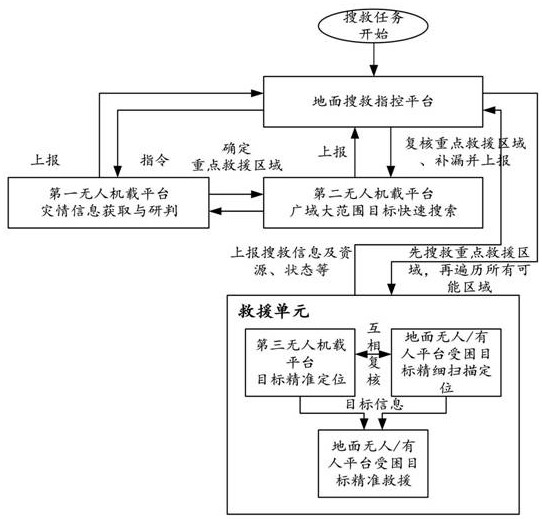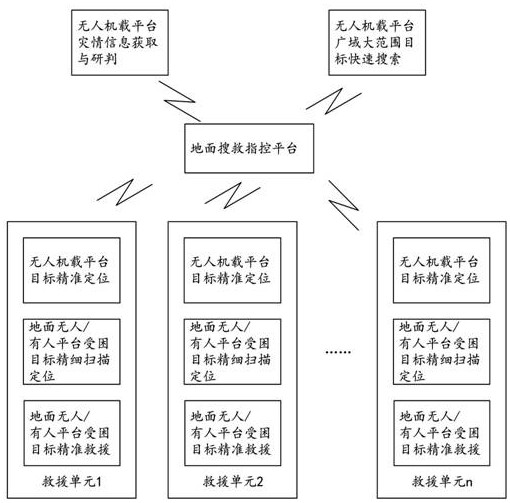Air-ground collaborative search and rescue system and method
A technology of search and rescue and air-ground coordination, applied in the field of air-ground collaborative search and rescue systems, can solve the problems of lack of search and rescue, lack of information review links, and difficulty in obtaining clarity of data, etc., and achieve the effect of fast search and positioning
- Summary
- Abstract
- Description
- Claims
- Application Information
AI Technical Summary
Problems solved by technology
Method used
Image
Examples
Embodiment Construction
[0046] The present invention will be further described below in conjunction with the accompanying drawings and specific embodiments.
[0047] Such as figure 1 As shown, the air-ground collaborative search and rescue system of this embodiment can be applied to the rapid rescue of large-scale disaster sites such as earthquakes, landslides, landslides, debris flows, forest fires, etc., specifically including disaster information acquisition and judgment units, target rapid search units, and accurate target The positioning unit, the precise target rescue unit and the ground search and rescue command platform, the disaster information acquisition and judgment unit, the target fast search unit, the target precise positioning unit and the target precise rescue unit are all connected to the ground search and rescue command platform;
[0048] The disaster information acquisition and research unit is connected with the target rapid search unit, and is used to obtain the disaster data of...
PUM
 Login to View More
Login to View More Abstract
Description
Claims
Application Information
 Login to View More
Login to View More - R&D Engineer
- R&D Manager
- IP Professional
- Industry Leading Data Capabilities
- Powerful AI technology
- Patent DNA Extraction
Browse by: Latest US Patents, China's latest patents, Technical Efficacy Thesaurus, Application Domain, Technology Topic, Popular Technical Reports.
© 2024 PatSnap. All rights reserved.Legal|Privacy policy|Modern Slavery Act Transparency Statement|Sitemap|About US| Contact US: help@patsnap.com










